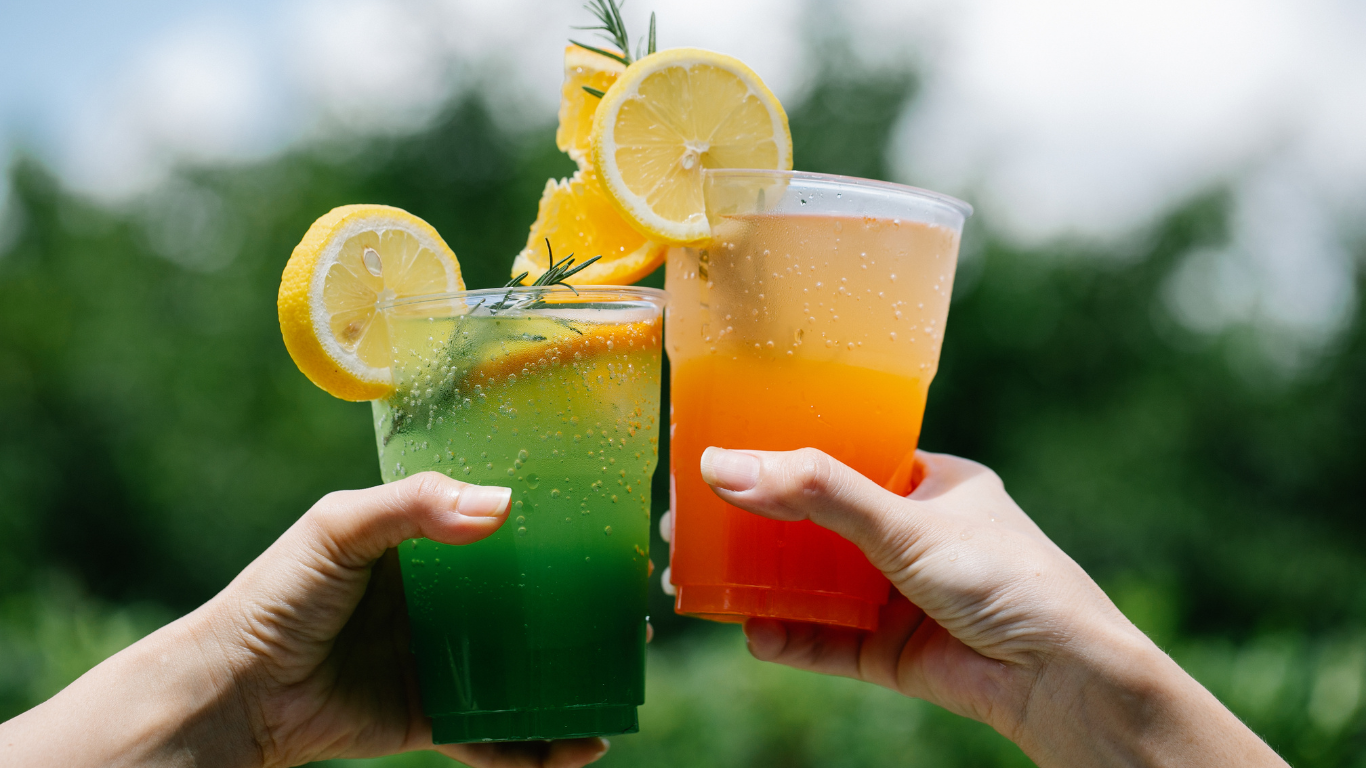Wisdom teeth removal is one of those life events that feels like a rite of passage, but let’s be real—it’s not exactly a party. Your mouth is sore, your cheeks are swollen, and all you want is to sip on something refreshing to make you feel human again. For many, that go-to drink is a fizzy, sweet soda. But hold up! Before you crack open that can of cola, you need to know the jaw-dropping truth about whether drinking soda after wisdom teeth removal is a genius move or a total disaster waiting to happen. Spoiler alert: the answer might surprise you! In this ultimate guide, we’re diving deep into everything you need to know about sipping soda post-surgery, from the risks that could derail your recovery to the safest ways to quench your thirst. Buckle up, because this is going to be a wild ride!
Why Wisdom Teeth Removal Is a Big Deal
Getting your wisdom teeth yanked out isn’t just a quick trip to the dentist—it’s a full-on surgical procedure that leaves your mouth in a delicate state. Those third molars, often crowded or impacted, get extracted to prevent pain, infections, or damage to your other teeth. But here’s the kicker: the aftermath is no joke. Your gums are left with open sockets where the teeth used to be, and these spots are like magnets for complications if you’re not careful. Swelling, pain, and even the dreaded dry socket (more on that later) can turn your recovery into a nightmare. That’s why what you eat and drink in the days following surgery isn’t just a casual choice—it’s a make-or-break decision for healing like a champ.
The first 24 to 48 hours are especially critical. Your dentist or oral surgeon will likely hand you a list of do’s and don’ts, and trust us, they’re not kidding around. Eating soft foods, avoiding straws, and steering clear of anything too hot or spicy are standard rules. But where does soda fit into this equation? Is it a refreshing treat you can sneak in, or is it a one-way ticket to regret city? Let’s break it down and uncover the truth that could save your smile.
The Burning Question: Can I Drink Soda After Wisdom Teeth Removal?
Alright, let’s cut to the chase—can you drink soda after wisdom teeth removal, or is it a dental disaster in the making? The short answer is: it’s complicated, and timing is everything. Soda might seem like a harmless indulgence, but it’s got a few sneaky traits that could spell trouble for your healing mouth. From the fizz to the sugar, every sip could be playing with fire. But don’t panic just yet—we’re about to unpack exactly why soda is such a controversial choice and when (or if) you can safely enjoy it again.
Most oral surgeons and dentists will tell you to avoid soda for at least the first few days after surgery, and some even recommend holding off for a full week or more. Why? Because your mouth is basically a construction zone, and soda is like a wrecking ball if you’re not careful. Let’s dive into the jaw-dropping reasons why soda could sabotage your recovery and what you need to watch out for.
Why Soda Might Be Your Mouth’s Worst Enemy Post-Surgery
Soda is a beloved beverage for millions, but when you’ve just had your wisdom teeth removed, it’s not exactly your mouth’s best friend. Here’s why that bubbly drink could cause more harm than good:
First up, let’s talk about the carbonation. Those fizzy bubbles might feel refreshing, but they can be a nightmare for your healing sockets. The pressure from the carbonation can irritate the surgical sites, potentially dislodging the blood clots that form in the sockets. These clots are your body’s way of protecting the exposed bone and nerves, and losing them can lead to a painful condition called dry socket. Trust us, dry socket is not something you want to mess with—it’s like inviting a dragon to live in your mouth, complete with searing pain and a longer recovery time.
Next, there’s the sugar factor. Most sodas are loaded with sugar, which is basically a buffet for bacteria in your mouth. After surgery, your gums are vulnerable, and any bacteria that set up shop can lead to infections that’ll have you back in the dentist’s chair faster than you can say “root canal.” Even diet or zero-sugar sodas aren’t off the hook—artificial sweeteners and acids can still irritate your sensitive gums and slow down healing.
Speaking of acids, soda is notoriously acidic, thanks to ingredients like phosphoric acid or citric acid. This acidity can sting the surgical sites, causing discomfort that’ll make you wince with every sip. Worse, it can weaken the enamel on your remaining teeth, which are already under stress from the surgery. Combine that with the fact that brushing might be tricky for a few days, and you’ve got a recipe for dental drama.
Oh, and let’s not forget temperature. If you’re craving an ice-cold soda straight from the fridge, think again. Extremely cold drinks can cause sensitivity or even pain in your healing mouth, especially if your nerves are still raw from the procedure. Hot drinks are also a no-go, so room-temperature soda might seem like a compromise—but with all the other risks, is it really worth it?
The Dreaded Dry Socket: Why It’s a Game-Changer
If there’s one word that strikes fear into the hearts of anyone who’s had wisdom teeth removed, it’s “dry socket.” This condition, known medically as alveolar osteitis, happens when the blood clot in your socket gets dislodged or dissolves before the wound has a chance to heal. Without that protective clot, the bone and nerves are exposed to air, food, and liquids, leading to pain that’s been described as worse than childbirth (yikes!).
Dry socket is relatively rare, affecting about 2-5% of patients, but certain behaviors—like drinking soda—can skyrocket your risk. The carbonation in soda can physically disrupt the clot, while the suction from sipping (especially if you’re using a straw) can yank it right out. Once dry socket sets in, you’re looking at intense pain, bad breath, and a recovery that could take weeks instead of days. Your dentist might need to pack the socket with medicated dressings, and you’ll be popping painkillers like they’re candy. In short, it’s a total buzzkill, and avoiding soda is one of the easiest ways to keep it at bay.
When Can You Safely Drink Soda Again?
By now, you’re probably thinking soda sounds like the villain in a dental horror movie, but don’t despair—there’s light at the end of the tunnel! While soda is off-limits for the first few days, you won’t have to swear it off forever. The key is timing and caution. Most experts agree that you should wait at least 72 hours before even thinking about soda, and even then, you need to tread carefully. Here’s a timeline to guide you through the soda comeback:
For the first 24 hours, stick to water and maybe some electrolyte drinks (as long as they’re not carbonated or sugary). Your mouth is at its most vulnerable, and hydration is your top priority. From 24 to 72 hours, you can start introducing other non-carbonated, non-acidic drinks like milk or smoothies, but keep avoiding soda like it’s the plague. After 72 hours, if your healing is on track—no swelling, no pain, no signs of infection—you might be able to sneak in a small sip of flat soda (think soda that’s been left out to lose its fizz). But hold off on the full-on bubbly experience until at least day five to seven, when your sockets have started to close up and the risk of complications drops.
Even when you do reintroduce soda, go slow. Choose a low-sugar or diet option to minimize bacterial risks, and avoid drinking it ice-cold or through a straw. Sip it gently, and rinse your mouth with water afterward to wash away any lingering sugar or acid. If you feel any pain or discomfort, stop immediately and check in with your dentist. Your mouth will thank you for playing it safe!
What to Drink Instead: Hydration Heroes for Healing
If soda’s off the table for now, what can you drink to stay hydrated and satisfied? Don’t worry—we’ve got a lineup of mouth-friendly options that’ll keep you refreshed without risking your recovery. These drinks are like the superheroes of post-wisdom teeth hydration, swooping in to save the day:
Water is your number-one ally. It’s gentle, hydrating, and helps flush out any debris from your mouth. Room-temperature or lukewarm water is best to avoid sensitivity. If plain water feels boring, try infusing it with a slice of cucumber or a hint of mint for a spa-like vibe. Electrolyte drinks like Pedialyte or Gatorade (diluted with water) can replenish nutrients, especially if you’re not eating much, but skip the carbonated versions and stick to low-sugar options.
Milk and plant-based milk like almond or oat milk are great choices, as long as they’re not too cold. They’re soft on your gums and packed with nutrients to support healing. Smoothies are another winner—blend up bananas, yogurt, and a splash of juice for a creamy treat that doubles as a meal. Just make sure they’re not too thick, and avoid seeds or chunks that could get stuck in your sockets.
Herbal teas (cooled to room temperature) can be soothing, but steer clear of anything caffeinated or acidic, like black tea or citrus-infused blends. Coconut water is another fantastic option—it’s naturally hydrating and gentle on your mouth, with a touch of sweetness to satisfy your cravings. Whatever you choose, sip slowly and avoid straws to keep those precious blood clots in place.
Diet Tips for a Speedy Recovery
While we’re on the topic of what to consume, let’s talk about food. Your diet plays a massive role in how quickly you bounce back from wisdom teeth removal, and the wrong choices can cause just as much trouble as soda. For the first few days, stick to soft, easy-to-swallow foods that won’t irritate your surgical sites. Think mashed potatoes, yogurt, applesauce, and creamy soups (cooled down, of course). Scrambled eggs and oatmeal are also great options as you ease back into eating.
Avoid anything crunchy, chewy, or spicy—say goodbye to chips, nuts, and hot sauce for now. Small food particles, like rice or sesame seeds, can get lodged in your sockets, so steer clear of those too. As you start feeling better (around day three or four), you can add in softer solids like pasta or well-cooked veggies, but keep it gentle. By the end of the first week, most people can return to a semi-normal diet, but always check with your dentist if you’re unsure.
Pro tip: chew on the opposite side of your mouth from the surgical sites to avoid putting pressure on the healing areas. And don’t skip meals—your body needs nutrients to repair itself, even if you’re not feeling super hungry. Pair your food with plenty of water to stay hydrated and keep your mouth clean.
Other Drinks to Avoid (Besides Soda)
Soda isn’t the only beverage that could throw a wrench in your recovery. There are a few other drinks that deserve a spot on the “do not touch” list until you’re fully healed. Alcohol is a big no-no—it can interfere with healing, increase bleeding, and interact with any pain meds you’re taking. Plus, it’s dehydrating, which is the last thing your body needs right now.
Coffee and other caffeinated drinks like energy drinks should also be avoided for at least the first few days. Caffeine can mess with your blood pressure and slow down clot formation, plus hot coffee can burn your sensitive gums. Acidic juices, like orange or grapefruit juice, are another culprit—their high acidity can irritate your wounds and cause stinging. Even sports drinks can be risky if they’re packed with sugar or carbonation, so read labels carefully.
If you’re a fan of kombucha or other fermented drinks, hold off for now. They often contain carbonation or acids that could cause problems. Stick to the safe bets we mentioned earlier, and you’ll be sipping worry-free in no time.
Signs Your Recovery Is Going Off the Rails
Even if you’re doing everything right, complications can sometimes sneak up. Knowing the warning signs can help you catch problems early and avoid a full-blown dental crisis. Pain that gets worse instead of better after a few days is a red flag—especially if it’s sharp or throbbing. Swelling that doesn’t go down after 48 hours or starts spreading to your face or neck is another cause for concern.
Fever, bad breath, or a foul taste in your mouth could point to an infection or dry socket. If you notice bleeding that won’t stop, pus around the surgical sites, or difficulty opening your mouth, don’t wait—call your dentist ASAP. These symptoms don’t always mean disaster, but it’s better to be safe than sorry. Your oral surgeon will likely want to check things out and might prescribe antibiotics or other treatments to get you back on track.
How to Care for Your Mouth Post-Surgery
Taking care of your mouth after wisdom teeth removal is like walking a tightrope—you need balance and precision to avoid a fall. Besides watching what you drink and eat, there are a few other steps to keep your recovery smooth. Rinse your mouth gently with warm saltwater starting 24 hours after surgery (mix a teaspoon of salt with a glass of warm water). This helps keep the area clean without irritating the wounds. Do it a few times a day, especially after eating.
Avoid brushing near the surgical sites for the first day or two, but keep the rest of your mouth clean to prevent bacteria buildup. If your dentist gave you a special syringe for cleaning the sockets, use it carefully to flush out debris once you’re past the initial healing phase. Don’t smoke or use tobacco products—they’re a fast track to dry socket and infections. And whatever you do, resist the urge to poke at the sockets with your tongue or fingers. It’s tempting, but it’s a surefire way to cause trouble.
Rest is also key. Avoid strenuous activity for at least a few days, as it can increase bleeding and swelling. Prop your head up with pillows when you sleep to reduce pressure on your face. Follow your dentist’s instructions to the letter, and don’t be afraid to reach out if something feels off.
The Emotional Side of Recovery: Staying Positive
Let’s be honest—recovering from wisdom teeth removal can be a bit of a rollercoaster. Between the discomfort, the restricted diet, and the constant worry about doing something wrong, it’s easy to feel frustrated or down. But here’s the good news: this is temporary, and you’re tougher than you think. Treat yourself to some self-care to lift your spirits—binge a new series, listen to your favorite music, or cozy up with a good book.
Lean on friends or family for support, whether it’s having someone whip up a smoothie for you or just keeping you company while you recover. Celebrate the small wins, like making it through the first 24 hours or finally getting rid of that pesky swelling. Before you know it, you’ll be back to your normal routine, sipping soda (carefully!) and laughing about the whole experience.
FAQs About Drinking Soda After Wisdom Teeth Removal
Still got questions? We’ve got answers! Here are some of the most common queries people have about soda and wisdom teeth recovery:
Can I drink flat soda sooner than carbonated soda? Flat soda is less risky since it lacks carbonation, but you should still wait at least 72 hours and choose a low-sugar option to avoid irritation or infection.
What about diet or zero-sugar soda? Diet sodas are slightly better since they don’t feed bacteria, but their acidity and carbonation can still cause problems. Hold off for a few days and sip cautiously.
Will one sip of soda ruin everything? A single sip probably won’t destroy your recovery, but it’s not worth the risk early on. If you’re craving soda, wait until you’re past the critical healing phase.
Can I use a straw with soda if I wait a week? Straws are generally safe after a week if your sockets are healing well, but check with your dentist first. Suction can still be risky if the wounds aren’t fully closed.
What’s the worst that could happen if I drink soda too soon? The biggest risks are dry socket, infection, or delayed healing, all of which can lead to pain and extra trips to the dentist. Play it safe to avoid these headaches.
The Bottom Line: Is Soda Worth the Risk?
So, can you drink soda after wisdom teeth removal? The truth is, it’s a gamble you don’t need to take. While soda might be calling your name, its carbonation, sugar, and acidity make it a risky choice in the first few days of recovery. From the threat of dry socket to the potential for infections, there are just too many ways it could go wrong. But don’t lose hope—you’ll be back to enjoying your favorite fizzy drinks soon enough if you play your cards right.
Stick to water, milk, smoothies, and other gentle options for the first week, and follow your dentist’s advice like it’s the holy grail. By prioritizing your healing, you’ll avoid complications and get back to normal faster than you ever thought possible. So, put that soda can back in the fridge, grab a glass of water, and give your mouth the TLC it deserves.




